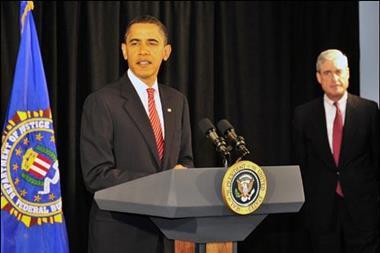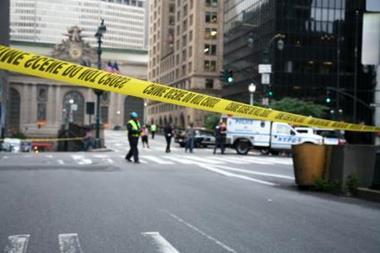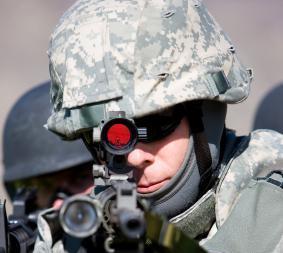Security was paramount when world leaders met in London at the ExCeL centre for the G20 summit in April. Carole Edrich gives her personal feedback
It is good practice for a photographer to look around the location in which he is working because light, interesting landmarks, perspectives and architectural quirks are always important. As the first photoblogger ever to be invited to cover a world leaders’ summit I had the additional responsibility of demonstrating alternative perspectives to those provided by mainstream media.
Although I know the inside of ExCeL fairly well, five days before the summit my old risk management habits kicked in. A cycling circumnavigation of the building that was to hold world leaders representing 85% of the planet’s wealth (if you consider the press coverage, even more of its influence) presented an initially unpleasant surprise.
Once abandoned docklands with a variety of unexploded leftovers from the World Wars, this area has also been a bastion of National Front supporters, an East End criminal’s no-man’s-land and is still campus for the politically active University of East London. Situated on the north side of Royal Victoria Dock, ExCeL is located between two Docklands Light Railway stations. To the east what once was wasteland is now in various stages of redevelopment and ExCeL west faces trendy residential warehouse conversions sprinkled with new hotels and interesting restaurants. The DLR and Victoria Dock Road, both important in the area, run extremely close to its northern walls. As if history, surroundings and location weren’t danger enough, the area’s recent rapid development meant that the entire area almost certainly relied on just one or two main trunks for sewerage, water and power services.
Over the next few days I realised that the areas of fragility I had identified were the centre’s greatest assets. The water of Royal Victoria Dock made a good natural obstacle; crossing it takes time, making it easier to stage a response. Service roads on one side of ExCeL made a good first-stop barrier between it and the DLR while the side adjoining the water was an easily protectable space. Since the only solid thing around the DLR is the ground a blast from a carriage packed with explosives would be unfocused and therefore unlikely to do significant harm. The same would be true for a truck bomb should it by some miracle get past the security cordons and patrols (on the day an early morning estimate showed a frequency of two to six minutes).
On subsequent visits I saw people checking and sealing manhole covers and even street light interiors. Meanwhile local residents and businesses had been instructed that they’d be allowed access to and from the area only if they could prove they belonged. This led to an exponential increase in security. Gero Turone, manager of Zero Sette Restaurant, explained, ‘We were told that staff would be allowed into the area to work provided they carried all the right documents. We didn’t want to close but decided in the end that we should because there would have been no-one to serve.’
“Local residents and businesses had been instructed that they’d be allowed access to and from the area only if they could prove they belonged.
One can conjecture that stricter measures had been undertaken for media visitors themselves. All were required to send details to the Home Office (presumably for terror profiling) and weren’t approved until scant days before the event. Stringent access measures on the day included; four accreditation and passport checks, transfers via three shuttle buses (the last of which we were told was ‘clean’) and airport-type baggage and personal security checks. This resulted in a 90 minute journey from our hotel to the building rather than the six minute walk originally anticipated. Shane McCracken, part of the G20Voice team who organised our access, explained that the hotel was originally chosen because of concern regarding the effects of a police blockade around protestors. ‘We booked it before knowing what the security arrangements were. Once we found out we realised that being so close was potentially more of a hindrance than an asset.’
The building itself was divided into areas for press, delegations and meetings and left the entire northern side (that closest the DLR and trunk road) a dead zone, presumably another security buffer to mitigate potential effects from explosives or projectile weapons. Despite this, even with 2,000-odd members of the world media, there was sufficient space for us to feel unrestricted. Relatively friendly security guards stood at entrances and exits and one place by the water had been designated as an outdoor/smokers’ zone so we could even take some sun.
While much had been made of President Obama’s 200 Secret Service agents, the only ones I recognised as such sat on the floor in the few metres between photographers and podium while Obama gave his speech. Paying equal attention to the laptop in front of him and those of us in the auditorium, the one closest to me was quiet, fair in his dealings and neither as aggressive nor unfriendly as more experienced photographers had led me to expect. I assume that the laptop presented summaries of the covert surveillance used in the auditorium and we were granted such close proximity to their leader because they had assessed our capabilities based on scans of our equipment on the way in.
It’s likely that CCTV covered everything through in the building and a large part of the surrounding area, that snipers were on roofs, and that there were rapid response teams, helicopter surveillance and probably satellite monitoring. During the summit itself we must have been watched with all manner of electronic surveillance but it was unobtrusive, didn’t interfere with our work, our sense of freedom or our mobile phones.
All in all I found ExCeL’s summit security to be modern, considerate and reassuring - which brings into question again the police strategies and tactics of the previous day when dealing with anti-capitalism protesters.
Postscript
Freelance writer and photographer Carole Edrich was the first photoblogger to be invited to cover a world leaders’ summit, www.webwandering.com



















